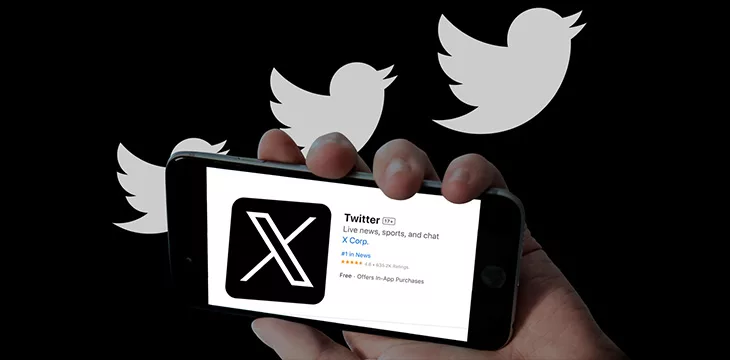|
Getting your Trinity Audio player ready...
|
The platform formerly known as Twitter is now simply “X.” This could take some getting used to, but the company’s executive team has been busy this week teasing hints about the “everything app” it could become. While it stands a good chance of becoming that universal service, we know ways it could become so much more.
Majority owner, Dogecoin fan, and sometime world’s-wealthiest man Elon Musk interrupted his usual stream of random memes and whimsy to hint at the change on July 23. Shortly afterward, he revealed the new entity and its logo would be just “X.”
And soon we shall bid adieu to the twitter brand and, gradually, all the birds
— Elon Musk (@elonmusk) July 23, 2023
X.com, which now redirects to Twitter’s main page, was the name of the financial services and online payments company Musk co-founded in 1999. After merging with Peter Thiel’s e-bank Confinity, the company eventually took the name of Confinity’s money transfer business: PayPal (NASDAQ: PYPL). But before that name change even happened, Musk had been removed as CEO. The dispute that saw him ousted was reportedly over his preference for Microsoft (NASDAQ: MSFT) software over Unix—not unlike a certain Satoshi Nakamoto.
Musk, as he himself has admitted, likes the letter X. This wasn’t a surprise, given he’s also the founder and CEO of SpaceX and Tesla (NASDAQ: TSLA), which recently released a car called “Model X.”
Not sure what subtle clues gave it way, but I like the letter X pic.twitter.com/nwB2tEfLr8
— Elon Musk (@elonmusk) July 23, 2023
Speaking of Satoshi Nakamoto, Dr. Craig S. Wright made a public offer to Musk in August 2021, inviting him to attend a CoinGeek conference and possibly work together on world-changing projects. Wright noted several similarities in their ages, personalities, and careers as innovators, especially in the digital payments space.
It’s unknown if Musk responded to or even heard about that invitation. Over the years, he has remained a devotee of Dogecoin. Some noticed he’d added the Dogecoin logo, along with stylized X, to the location section of his profile page as “𝕏Ð.” This caused considerable excitement among those who’ve followed Dogecoin since December 2013—as blockchain’s pioneering “memecoin,” its holders long for the day Musk will integrate it for real into one of his companies as more than just a one-off novelty, therefore pumping their bags.
Dogecoin’s protocol is based on Litecoin and uses LTC’s scrypt algorithm. Its longevity, grassroots-populist attitude, and occasional attention from celebrities (especially Musk) have kept it near the top ten digital assets by market cap over the years: currently US$26.7 billion, despite a unit price of ~7 cents. That unit price has jumped 12.4% over the past week, likely due to speculation about Musk’s intentions. Over 140.3 billion DOGE has been mined in the past decade, surpassing its original “limit” of 100 billion. It currently has no hard cap on the number of Dogecoins that can exist.
Twitter’s more-than-just-a rebrand
While Musk mostly limited his tweets (are they still called that?) about the change to vague hints and images of X-themed logos, recently-appointed CEO Linda Yaccarino elaborated further on the company’s plans:
X is the future state of unlimited interactivity – centered in audio, video, messaging, payments/banking – creating a global marketplace for ideas, goods, services, and opportunities. Powered by AI, X will connect us all in ways we’re just beginning to imagine.
— Linda Yaccarino (@lindayaX) July 23, 2023
“For years, fans and critics alike have pushed Twitter to dream bigger, to innovate faster, and to fulfill our great potential,” she added. “X will do that and more. We’ve already started to see X take shape over the past 8 months through our rapid feature launches, but we’re just getting started.”
She described X as “the future state of unlimited interactivity,” with rich multimedia content as well as payments and banking—”creating a global marketplace for ideas, goods, services, and opportunities.” X would be “powered by AI” and “will connect us all in ways we’re just beginning to imagine.”
Yaccarino hasn’t yet elaborated on how X/Twitter will achieve these goals. There have been several comparisons to China’s WeChat, which combines a messaging platform with banking and digital payment services and has proved immensely popular.
Most of the reaction to, and resulting discourse about, the X/Twitter change has been over the new name and logo, along with now-predictable threats to quit the platform.
If you want to read all that, just click one of Musk and Yaccarino’s threads. However, focusing on this sideshow is probably a waste of time—names and brands change, and people get used to them. What’s more important is whether X can actually become that fabled “everything app,” the service so essential that most people in the world will feel the urge to have and use an account.
There’s only one globally-scalable blockchain: BSV blockchain
While Dogecoiners have been enjoying the hype so far, our bias at CoinGeek is towards an “everything app” based on the BSV blockchain. That bias exists for a good reason: BSV blockchain, as Bitcoin, was the first and original blockchain when it launched to the public in 2009. It still follows that protocol’s “set in stone” rules for transactions and scripts created by Satoshi Nakamoto, which includes the ability to scale unboundedly.
Along with its massive capacity, BSV blockchain’s paradigm of permanent, user-controlled ownership of all personal data is superior to anything else. Many are skeptical of the “everything app” concept in general, noting that it hands too much power to a corporate entity that is not answerable to the public. Given the frequent privacy violations and censorship craze that have sadly become the norm in the world of centralized online services, it’s valid to ask the questions: what happens if the everything app unilaterally shuts down your account? Would it essentially “un-person” any individual who didn’t follow its capricious rules?
The “everything app” may be an inevitability, but if it must exist, it’s far preferable to have one with built-in safeguards for privacy and data ownership. A particular BSV app could theoretically ban a user account. However, that user would still have access to their digital assets and data, which (again, theoretically) could have value on other platforms.
Likewise, Yaccarino’s vision of an interactive platform “driven by AI” needs clear rules and safeguards as well. What role does AI play here: is it trained on what users have posted? Does it “decide” what users see, which topics trend, and the direction of the conversation?
An ‘everything blockchain’ for an ‘everything app’
These questions, the answers that haven’t yet been given, and the debates concerning them are integral to the “Web3” concept of a blockchain-based internet and how it handles users’ data. If the debate occurs behind closed boardroom doors, and answers aren’t satisfactory, there won’t ever be any real trust in Web3. It’ll be sold mostly on its conveniences, with little regard given to its wider socio-political ramifications.
Web3’s “everything app” must run on the world’s only truly trustable blockchain: BSV. The BSV blockchain also happens to be the only blockchain network technically capable of recording and processing all that data at scale and speed. It’s not enough to integrate a memecoin into a global platform for payments and interactions if its blockchain can’t handle the traffic or can only deal with payments. The everything app should use an “everything blockchain” as well.
CoinGeek Conversations with Owen Vaughan & Alessio Pagani: Blockchain can bring accountability to AI

 09-12-2025
09-12-2025 





